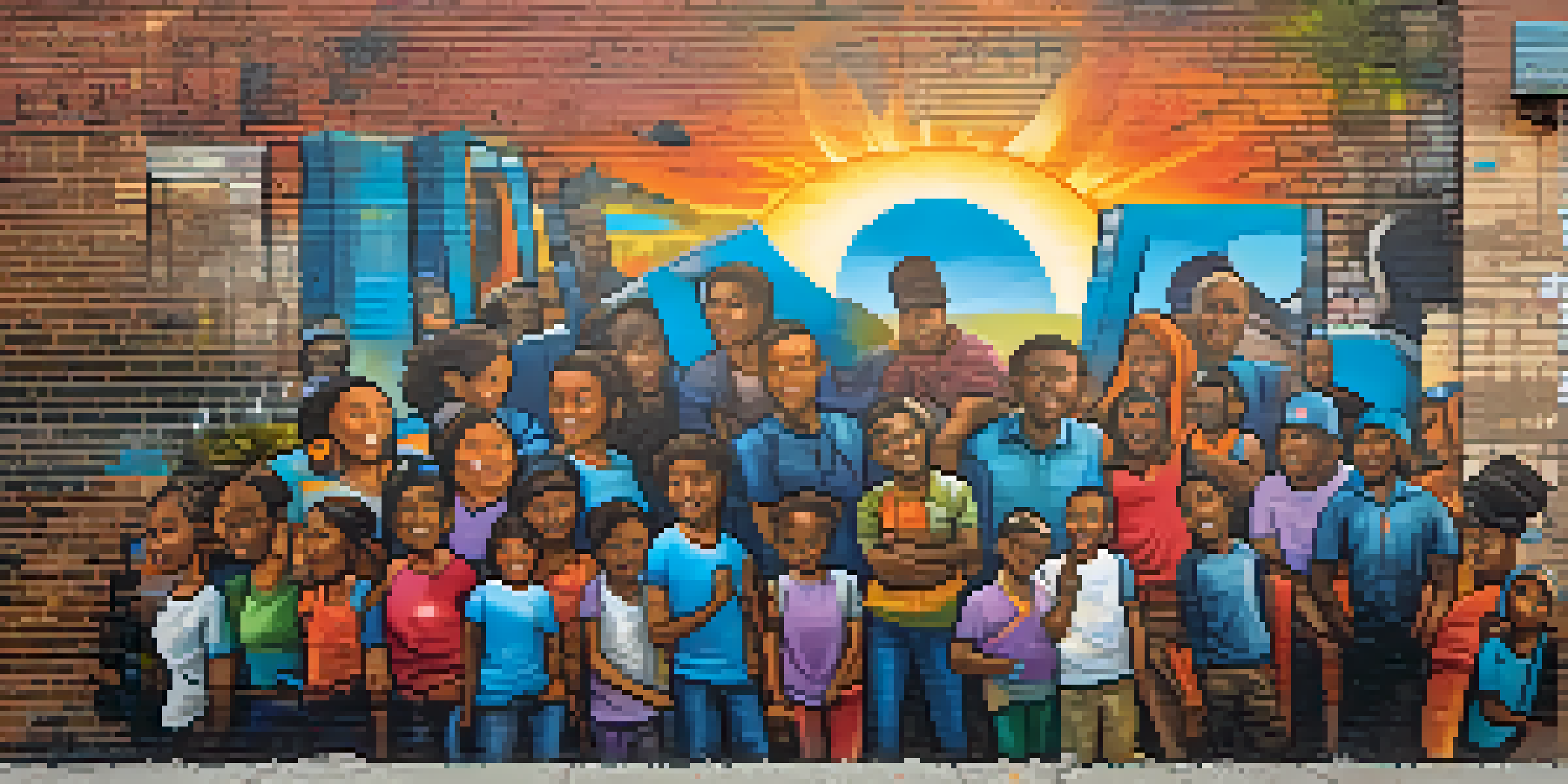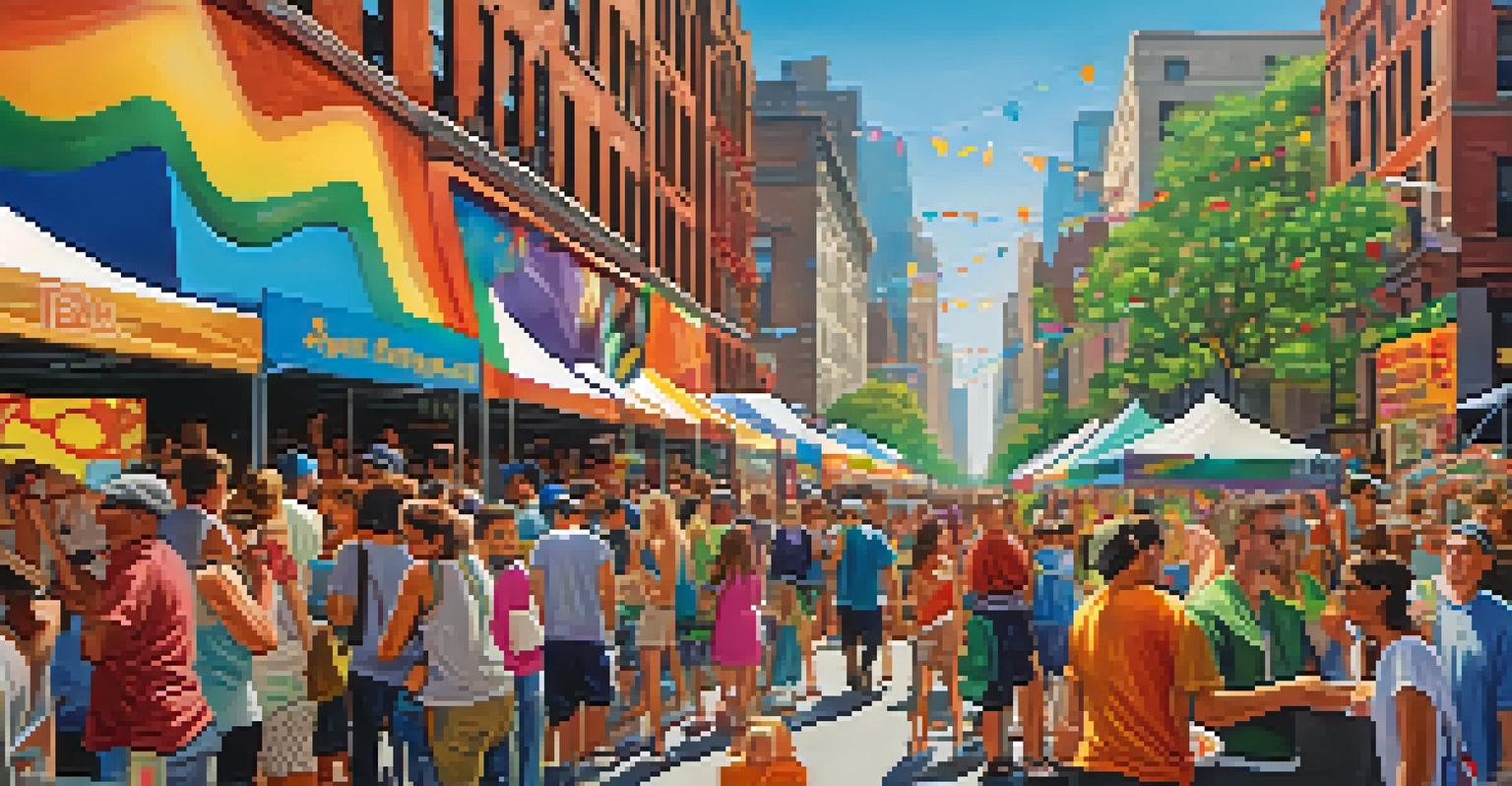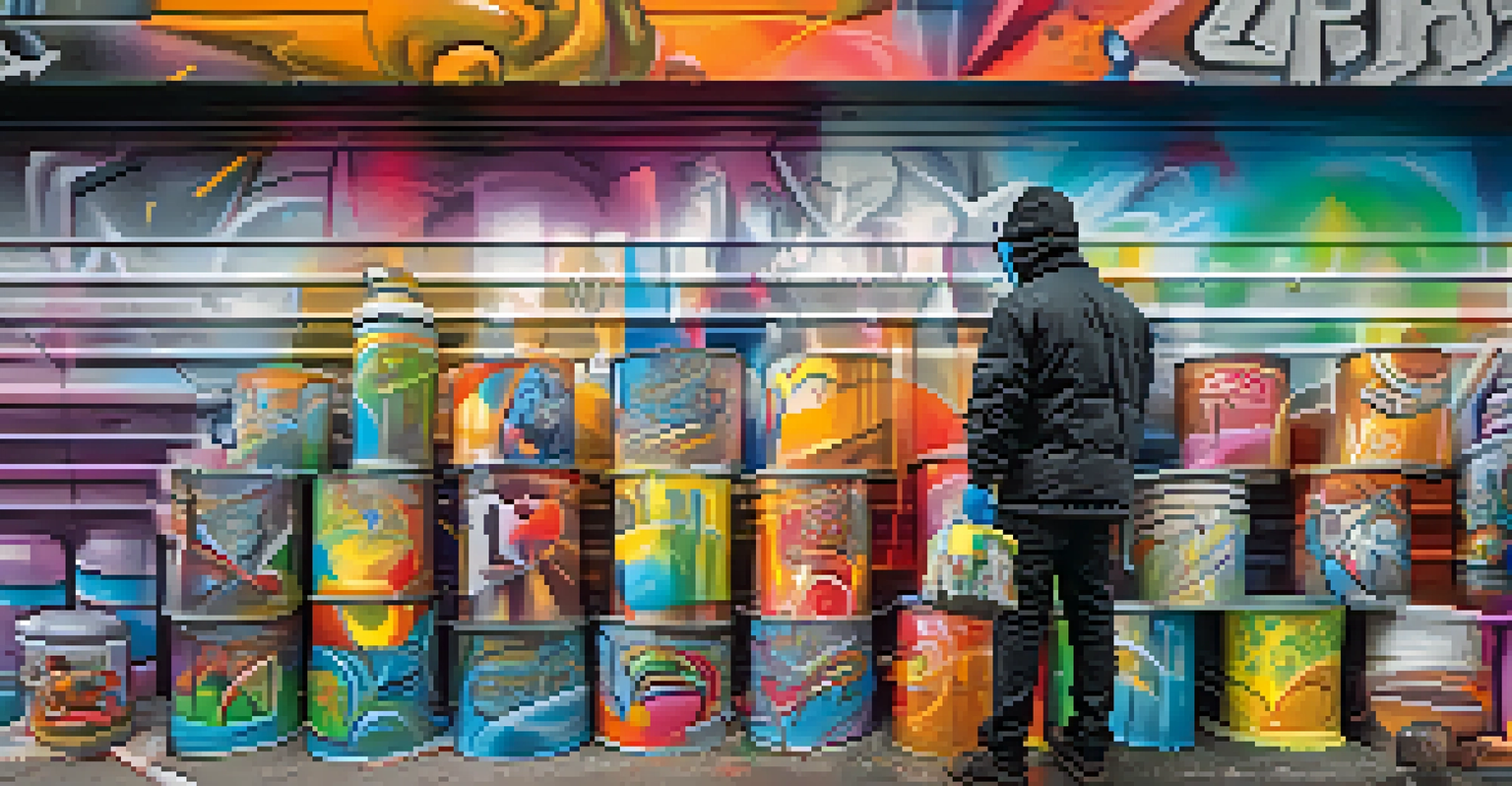The Role of Street Art in New York's Urban Culture

The Origins of Street Art in New York City
Street art in New York City has deep roots, tracing back to the late 1960s and early 1970s. It began as a form of expression among marginalized communities, with artists utilizing public spaces to voice their concerns and creativity. This movement was fueled by the rise of hip-hop culture, where graffiti became a key component of identity and storytelling.
Art is not what you see, but what you make others see.
In those early days, artists like Taki 183 and Jean-Michel Basquiat paved the way for what would become a vibrant tapestry of urban art. Their work transformed neglected neighborhoods into outdoor galleries, challenging the traditional notions of art being confined to museums. This shift not only disrupted the art scene but also set the stage for future generations of street artists.
Today, the legacy of those pioneers can be seen across the city, with murals and graffiti telling stories of struggle, hope, and resilience. The evolution of street art is a testament to the dynamic spirit of New York, where creativity thrives in unexpected places.
Street Art as a Form of Social Commentary
One of the most powerful aspects of street art is its role as a medium for social commentary. Artists use public spaces to address pressing issues such as inequality, racism, and political unrest, making their messages accessible to all. For instance, works by artists like Banksy and Shepard Fairey often spark conversations that challenge the status quo.

By placing these artworks in urban environments, artists can reach a diverse audience, making their messages resonate on a personal level. This direct engagement encourages viewers to reflect on societal issues and can inspire action or change. Street art thus becomes not just a visual experience but a catalyst for dialogue.
Street Art as Social Commentary
Street art serves as a powerful medium for addressing social issues, making important messages accessible to the public.
Moreover, the ephemeral nature of street art adds to its urgency; these pieces can be painted over or removed at any time, making each artwork a fleeting moment that captures the spirit of the times. This impermanence propels artists to push boundaries and articulate their views in bold, creative ways.
The Intersection of Street Art and Gentrification
As neighborhoods in New York City undergo gentrification, street art often finds itself at a crossroads. On one hand, new art can beautify areas and attract visitors, contributing to local economies. However, this influx can also lead to the displacement of original artists whose work reflects the community’s identity.
Street art is a form of social commentary that reflects the world around us.
Many local artists view gentrification as a double-edged sword—while it provides opportunities for exposure, it also risks erasing the cultural narratives that street art embodies. As established businesses move in and rents rise, artists may find it increasingly difficult to maintain their presence in the very neighborhoods they helped define.
This complex relationship highlights the need for community engagement in urban planning. By fostering spaces where local artists can thrive, cities can honor the past while embracing the future, ensuring that street art remains a vital part of the cultural landscape.
Street Art and Community Identity
Street art serves as a reflection of community identity, often embodying the values and experiences of local residents. Murals celebrating cultural heritage, for example, can foster a sense of pride and belonging among community members. This form of expression not only beautifies the urban landscape but also strengthens social ties.
Artists frequently collaborate with community organizations to create works that resonate with local histories and narratives. These projects can empower residents to reclaim public spaces and assert their identity amidst rapid changes. For many, participating in a mural project can be a transformative experience, bridging gaps between different community groups.
Gentrification's Impact on Artists
The gentrification of neighborhoods presents both opportunities and challenges for street artists, risking the erasure of community identities.
Furthermore, street art can act as a visual archive, documenting the evolution of neighborhoods over time. As new art replaces older pieces, the stories of the community continue to unfold, preserving a living history that engages both residents and visitors alike.
The Role of Street Art Festivals
Street art festivals have become a significant part of New York's cultural calendar, showcasing local and international talent. Events like the Bushwick Collective and the Dumpling Festival highlight the vibrancy of street art and its ability to draw people together. These festivals not only celebrate creativity but also promote local businesses and foster a sense of community.
During these events, artists often collaborate on large-scale murals, transforming entire blocks into vibrant canvases. This collective approach encourages networking and skill-sharing among artists, cultivating a supportive environment where creativity can flourish. Attendees are not just passive observers; they become part of the artistic process.
Moreover, street art festivals challenge the notion of art as elitist by placing it in public spaces where everyone can appreciate it. By breaking down barriers, these events make art accessible to all, encouraging a diverse audience to engage with the creative process.
Digital Influence on Street Art
In today's digital age, social media plays a transformative role in the street art scene. Platforms like Instagram allow artists to showcase their work to a global audience, amplifying their reach far beyond the streets of New York. This online visibility can help emerging artists gain recognition and support, leading to new opportunities and collaborations.
Additionally, social media fosters a sense of community among street artists and enthusiasts. Artists can share their processes, engage with followers, and even crowdsource funding for projects. This interconnectedness has created a vibrant online culture that complements the physical world of street art.
Digital Age Transforms Street Art
Social media expands the reach and visibility of street art, while also presenting challenges related to authenticity and commodification.
However, the digital realm also presents challenges, as the commodification of street art can dilute its original intentions. As artists navigate this new landscape, they must balance the desire for exposure with the authenticity of their message, ensuring that their work remains true to its roots.
The Future of Street Art in New York
Looking ahead, the future of street art in New York City is both exciting and uncertain. As urban landscapes continue to evolve, artists will undoubtedly adapt their practices to reflect new realities. This resilience has been a hallmark of street art, allowing it to remain relevant amidst changing socio-political climates.
Emerging technologies, such as augmented reality, could further revolutionize the way street art is experienced. Imagine walking through a neighborhood and using an app to see hidden layers of meaning in a mural, or interacting with the art in real-time. These innovations could bridge the gap between the physical and digital worlds, creating a more immersive experience.

Ultimately, the survival of street art will hinge on the support of communities and policymakers alike. By recognizing its cultural significance and providing spaces for creativity to thrive, New York can ensure that street art continues to be a vital part of its urban identity for generations to come.